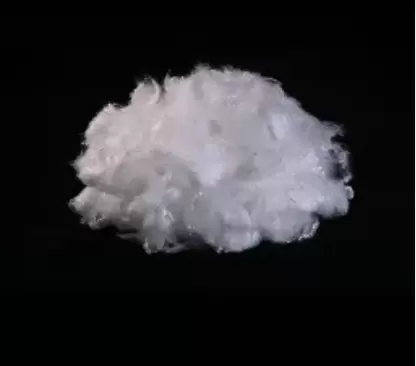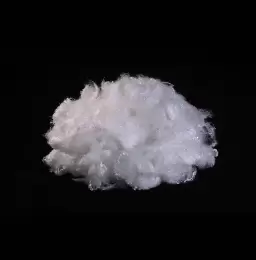
-
Telephone:+86-13157900738
-
Email:hewa-fibertex@hotmail.com

What are the characteristics ofpolyester fiber?
What are the characteristics ofpolyester fiber
Polyesterfiberis a common textile material, which has the advantages of highstrength, good elasticity, heat resistance, abrasion resistance, andlight resistance, but also has the disadvantages of poor solventresistance, dyeability, and poor hygroscopicity. When we buy clothes,we sometimes find that there are two kinds of polyester fiber andpolyester fiber. Many friends do not understand the differencebetween the two. In fact, polyester is another name for polyesterfiber. There is not much difference between the two. In fact, It'sthe same thing. Let's take a look at polyester fiber together! Thecharacteristics of polyester fiber
1. High strength
The short fiber strength is2.6-5.7cN/dtex, and the high-strength fiber is 5.6-8.0cN/dtex. Due toits low hygroscopicity, its wet strength is essentially the same asits dry strength. The impact strength is 4 times higher than that ofnylon and 20 times higher than that of viscose fiber.
2. Good elasticity
The elasticity is close to that ofwool, and when it is stretched by 5% to 6%, it can be almostcompletely recovered. The wrinkle resistance exceeds other fibers,that is, the fabric does not wrinkle and has good dimensionalstability. The modulus of elasticity is 22-141cN/dtex, which is 2-3times higher than nylon. .Polyester fabric has high strength andelastic recovery ability, so it is durable, wrinkle-resistant andnon-ironing.
3. Strong heat resistance
Polyester ismade by melt-spinning method, and the formed fiber can be heated andmelted again, which belongs to thermoplastic fiber. The melting pointof polyester is relatively high, and the specific heat capacity andthermal conductivity are small, so the heat resistance and heatinsulation ofpolyester fiberare higher. It is the best among synthetic fibers.
4. Good thermoplasticity, poormelting resistance
Due to its smooth surface and tightinternal molecular arrangement, polyester is the most heat-resistantfabric among synthetic fabrics. It is thermoplastic and can be madeinto pleated skirts with long-lasting pleats. At the same time,polyester fabric has poor melting resistance, and it is easy to formholes when encountering soot and sparks. Therefore, try to avoidcontact with cigarette butts, sparks, etc. when wearing.
5. Good wear resistance
Abrasion resistance is second onlyto nylon with the best abrasion resistance, better than other naturalfibers and synthetic fibers.
6. Good light fastness
Lightfastness is second only toacrylic. The light fastness of polyester fabric is better, exceptthat it is worse than acrylic fiber, and its light fastness is betterthan natural fiber fabric. Especially behind glass the light fastnessis very good, almost on par with acrylic.
7. Corrosion resistance
Resistant to bleaches, oxidants,hydrocarbons, ketones, petroleum products and inorganic acids. Dilutealkali resistance, not afraid of mildew, but hot alkali can make itdecompose. It also has strong acid and alkali resistance and UVresistance.
8. Poor dyeability, but good colorfastness, not easy to fade
Because there is no specific dyeinggroup on the polyester molecular chain, and the polarity is small, itis difficult to dye, the dyeability is poor, and the dye moleculesare not easy to enter the fiber.
9. Poor hygroscopicity
It feelsstuffy when worn, andpolyester fiberis easy to be charged with static electricity and stained with dust,which affects the appearance and comfort. However, it is very easy todry after washing, and the wet strength hardly decreases, does notdeform, and has good washability and wearability.


